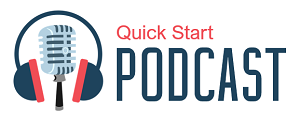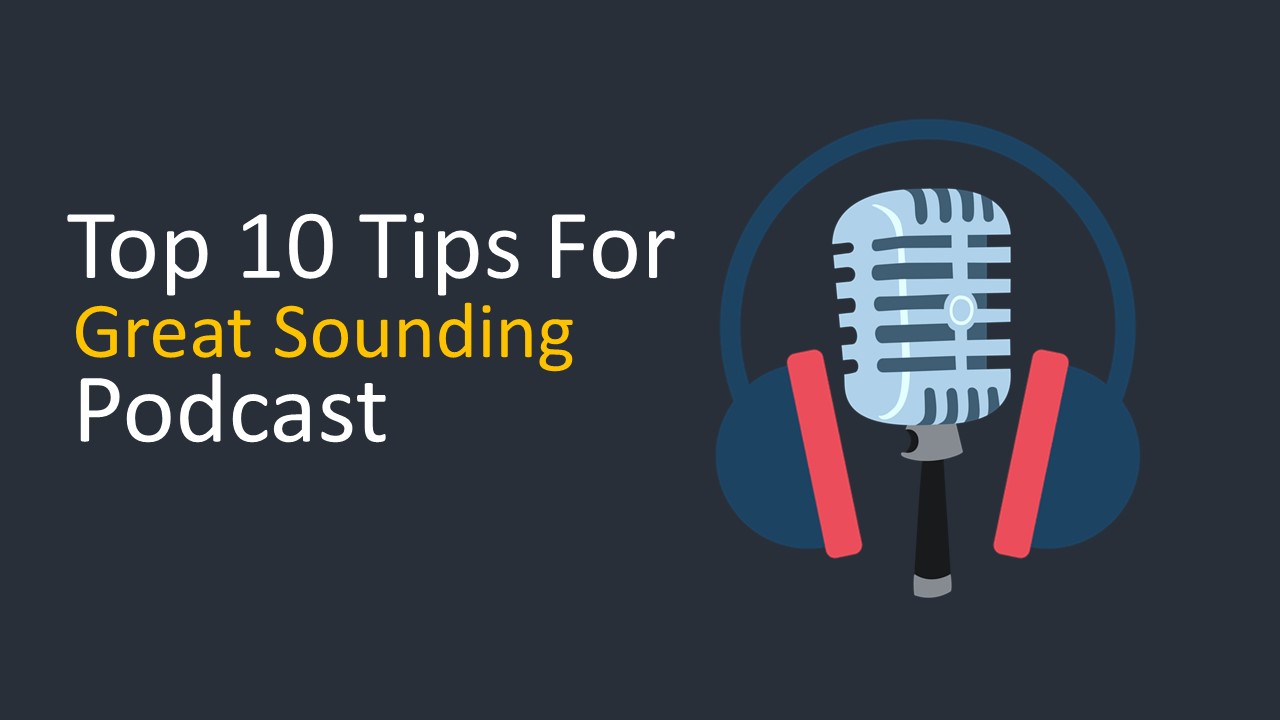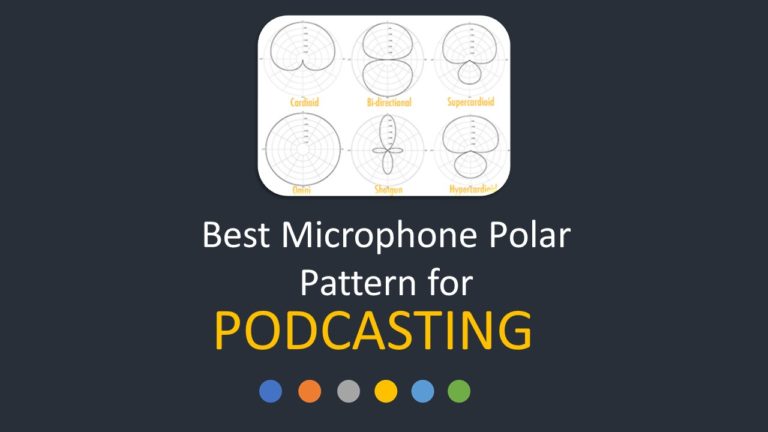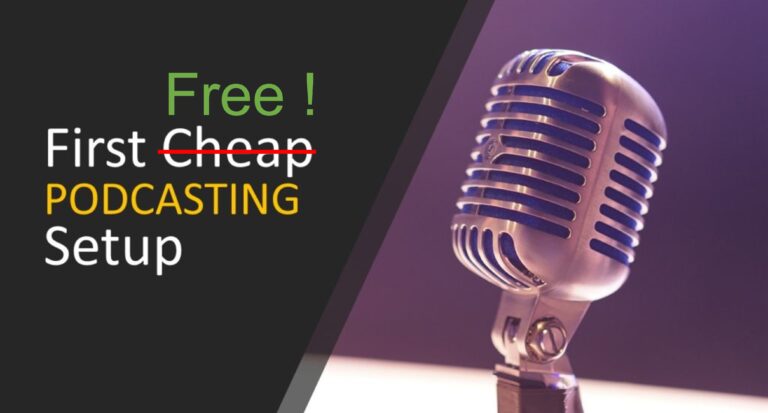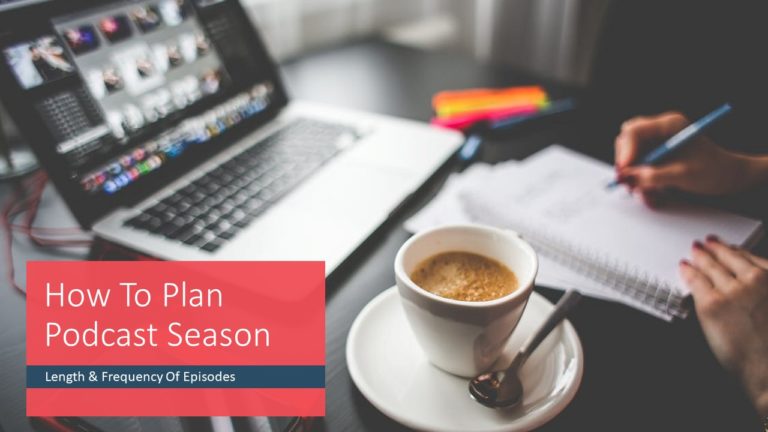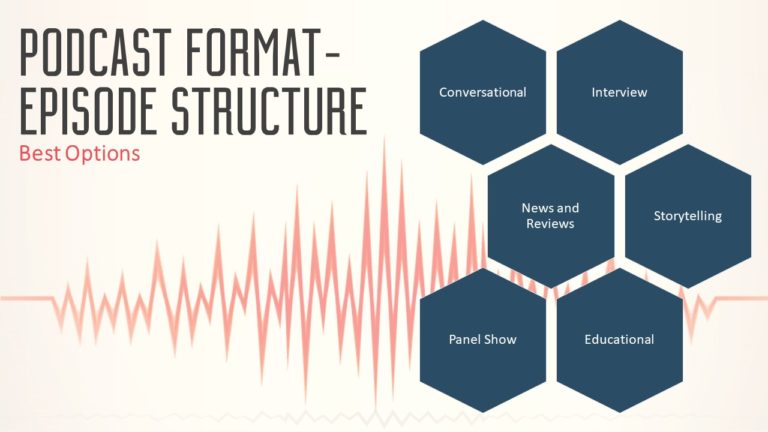Top 10 Tips For Great Sounding Podcast
With millions of podcasts out there on similar topics, it is essential to have a great sounding podcast to make the right impression on your targeted audience.
Here are some tips for great sounding podcast .
- Choose the right equipment
- Maintain consistent distance from the microphone
- Maintain audio levels
- Sound natural
- Stand and deliver !
- Find the quietest room in your house or hire a studio
- Use headphones
- Record at highest resolution files possible
- Use post processing to remove noise and enhance audio
A professional sounding podcast will attract the audience to subscribe to your podcast , thus increasing the popularity and helping you to achieve your podcasting goals.
Why you need a great sounding podcast ?
A poorly recorded , edited podcast will not go down well with your audience , no matter how good the content is. Even though you have well researched and thought out content, unless you package it well it is difficult to sell.
If you want to make any progress in terms of number of listeners, then having a great sounding podcast is a must.
What makes a great sounding podcast ?
There are three main elements to a great sounding podcast.
- High quality sound recording
- High quality and precise editing
- High quality post-processing
It all comes with a lot of experience off course, but you can start off with these 10 tips for a great sounding podcast.
Tip 1 : Choose the right equipment.
Choosing the right equipment, especially the microphone is one of the most important parts of a great sounding podcast. The battle is half one with a good microphone.
A good microphone coupled with a good recorder will automatically ensure a decent enough quality of the podcast.
If you’re starting out however, it is not necessary to spend thousands of dollars on a expensive podcasting equipment. You can start off with a decent microphone at around fifty to hundred dollars and a suitable recorder.
Blue Yeti Audio-Technica ATR 2100 Road pod Mike Are some of the decent choices at low price points.
Using a POP filter is also important. read all about tit here.
You can read our post on USB microphones to learn more and if you want to know about Audio recorders then click here.
Tip 2 : Maintain consistent distance from the microphone
When you are speaking into the microphone, it is necessary to maintain the correct distance from the microphone. It is also important to maintain this distance throughout the recording.
A good starting point is around 6 inches from the microphone. You can do a trial recording by keeping around 6 inches distance from the microphone and speaking in normal voice and see if you get consistent audio levels.
Do not move to and fro and sideways as far as possible during the recording as it will create inconsistent experience for the user.
There are a few things that you can correct later on in the editing process, but such movements away and towards the microphone will generally not be addressable in the post processing.
Staying close to the microphone, especially in case of a high-quality microphone would enhance the audio quality and give a deep resonating voice which sounds great on podcast and is an important factor for a great sounding podcast.
We’ve all heard distracting plosives or “P-Pops” and hyper-sibilant “S” sounds. Both of these issues are caused by excessive bursts of air hitting the microphone capsule, a symptom of poor mic technique.
If you notice too many plosives or harsh sibilance in your recordings, the simplest solution is to move off-axis from the microphone. Setting your mic up to the side, angled slightly toward your mouth, will prevent bursts of air from hitting the capsule directly and can result in a smoother, more natural tone.
Tip 3 : Maintain audio levels
When you are starting out, you will generally be recording your podcast directly to a computer. If you are doing so it is important to make a test recording to see what kind of audio levels you are getting.
While recording, you will see the bars moving from green to yellow to red. You should always try and remain in the green or at the most in the yellow region at your maximum voice. You can always enhance this later on in the post processing.
If you record in the red level, then it is very difficult for you to get any clarity from your recording later on in the post processing and your voice will sound annoying / harsh to the listener.
If you record in the green or yellow region, then there are many tools such as compressor, normalizer or even EQ which can be used during post processing to correct the levels.
Tip 4 : Sound natural
Many a times when you are recording your podcast it there is a tendency to become artificial in terms of the nature of your voice.
Many people do not speak naturally in front of the microphone and sound awkward during the recordings.
If you want a great sounding podcast, it is essential to sound natural. Speak into the microphone as if you are having a conversation with your audience.
It will help to strike the connect with your audience and make your podcast a great sounding podcast. Putting up a special voice for podcasting is difficult to sustain.
If you speak in your natural voice, you can have a good conversation with the fellow podcasters, or your audience and it will really help to enhance the quality of your podcast. The overall quality of the podcast will also be a lot more consistent when you speak in your natural voice, so just try and sound natural.
Tip 5 : Stand and Deliver
Standing up while recording your podcast may sound a bit funny, but it is one of the oldest techniques generally used by vocal artists to sound better into the microphone.
Standing up delivers the better air for flow through your breathing system and allows you to speak in a more natural ,deeper voice.
Standing up and moving your head a little upwards towards the microphone by holding the microphone above your mouth level can also reduce some of the irritating nasal tone in your voice if you have one.
Tip 6 : Find the quietest room in your house
Though a lot of things can be done in post processing, it is essential to record your podcast in a quiet room.
Find the quietest room and the quietest time of the day for recording your podcast. A room full of objects can be a good starting point as it eliminates a lot of echoes and reverberations.
If you can find a small dedicated corner where you can attach some sound-absorbing foams and carpets and similar things to the surrounding areas, then it can substantially improve the quality of your podcast sound and make your podcast a great sounding podcast.
Stop for a moment before you record the final thing and listen on your headphones to what’s happening in the room. Do you hear a refrigerator? Is the A/C unit loud? Eliminate any distracting sounds where possible.
It is not necessary to spend a lot of money preparing your recording room or recording studio before achieving any success with your podcast.
It is very easy to identify the right place and time to record your podcast and spend a bit of money in some sound dampeners to achieve the required quality.
Tip 7 : Use headphones
Using good quality headphones to review what you are recording is very crucial to have a great sounding podcast.
You get a good idea about your voice, your voice levels and the ambient or the surround sound that your microphone is catching. You can reflect on the quality of your vocals when you listen to yourself through headphones.
You can do a test recording and listen to it through your headphones in order to identify any Improvement points and then make the final recording.
In some cases, there can be a small delay between the time that you speak, and you actually listen through your headphones. Some of the microphones have a zero-lag headphone output which can be really helpful.
If you are uncomfortable in using headphones during recording, then you should at least use them during a test recording once you finalize all the settings, sound levels and distance from microphone. Maybe you can keep them away and do a final record ring.
Tip 8 : Record at highest resolution files possible
You should always record your podcast at the highest possible resolution offered by the software and the hardware.
While uploading your podcast or converting them to MP3 files, they will always be compressed by the algorithm used by the hosting provider or the software which converts your recording into an MP3 file.
However, if you start off with a very high-resolution file, then the overall quality will always be better as you get a better starting point. Following are some of the examples of high-resolution file formats.
CD Quality Audio : 44.1 KHz/16 bit
Hi Res Audio : 96 kHz / 24 Bit
The sampling rate is generally given in kHz , higher sampling rates mean that more samples per second were taken when the original analog sound was converted into digital.
High-Resolution Audio’s bitrate (9,216 kbps) is nearly seven times higher than that of CDs (1,411 kbps) and almost 29 times higher than that of MP3s (320 kbps). And the higher the bitrate, the more accurately the signal is measured.
Tip 9 : Use post processing to remove noise and enhance audio
Using the post processing software to remove noise from your recording can be crucial for great sounding podcast.
Software like audacity Adobe Audition or any other equivalent software will generally have a noise reduction feature in order to use this filter correctly.
In order to use this noise reduction correctly. It is important that you leave a silent portion before you start recording your podcast. This silent portion of few seconds will help the software to understand the background noise in the room that you are recording and hence eliminate it by its algorithm.
Be careful of using the noise reduction as a lot of it can make the actual recording or your voice a bit tinny.
You will be surprised the difference in the quality of audio the noise reduction makes. You can also use other techniques such as compressor, equalizer and normalizer in order to enhance the audio quality.
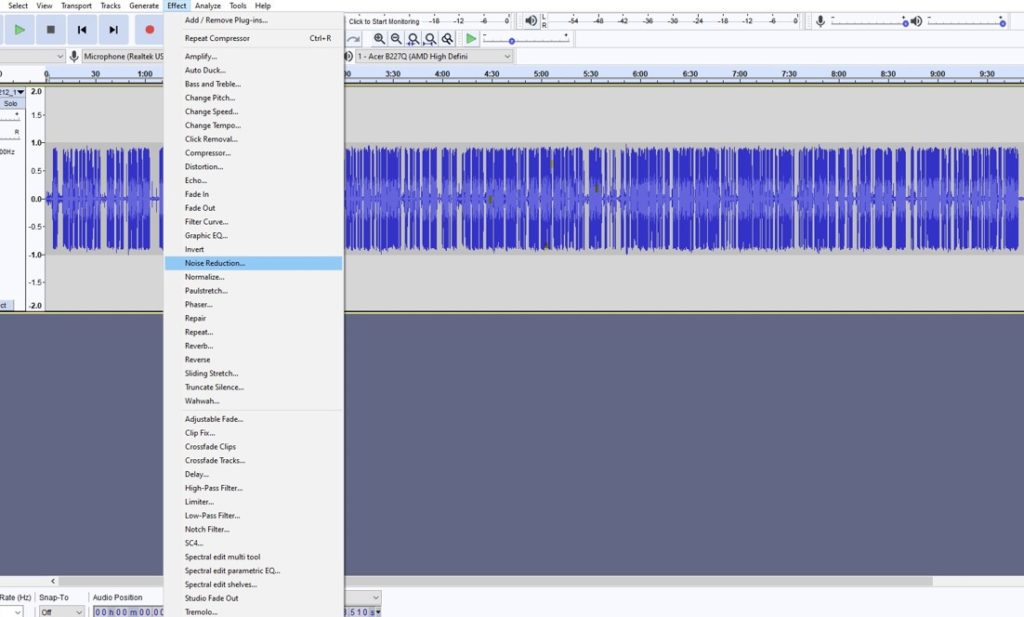
Such techniques generally improve the quality of your audio by enhancing the low volume regions, while cutting off the high-volume regions thus giving overall consistent volume to your recording. Some of the equalizer settings can also increase the low and the higher frequencies in order to enhance the vocals.
EQ is perhaps the most powerful sound-adjusting tool available. It gives you the ability to boost or cut frequencies, compensating for excessive volume in particular areas of recordings.
If your audio sounds too “boomy,”, odds are good there is too much bass (250Hz and below).
If it sounds “muddy,” there is probably too much volume in the low midrange (250Hz – 500Hz).
Too much upper midrange (2-4kHz) can sometimes sound “harsh,” and build-up in the highs (6-20kHz) can make something sound “shrill” or “piercing.”
Listen to your recording carefully with a good pair of headphones and adjust these specific frequency ranges to make a great sounding podcast.
Tip 10 : Edit and remove all unnecessary things in your recording
Nobody is perfect and you will make a lot of unnecessary and extra sounds when you are recording your podcast.
If you are very close to the microphone, then many sounds that you unintentionally make while speaking also get recorded. It is essential to remove them before processing your final podcast.
Breathing noise , tongue noise , clutter , mouse clicks etc should be completely removed in post processing as far as possible to make a great sounding podcast.
Once you are editing your podcast, you will probably start to notice just how often “um,” “uh,” and “like” make appearances, or how often speaker begins a sentence before they have a complete thought to share.
Summary
There are many things that you need to do for a great sounding podcast.
Some of them you need to do while recording the podcast itself in terms of mic techniques, equipment and recording techniques. Some things can be done after you record in the post processing or editing.
Following all the important techniques will help you to achieve a great sounding podcast.
Welcome to your podcasting journey with quickstartpodcast team.
Below paragraphs have links to all our posts in a logical manner starting from being a podcast listener to being a podcast creator.
The podcast Listener phase :
The podcasting journey generally begins with various questions such as what is a podcast , what a podcast is used for ? how to listen to a podcast , what are the best android and iOS apps to listen to podcast .
Depending upon the things that you like you will search for fiction podcasts , educational podcasts etc. Most of the people restrict their journey in podcasting to this level. They just end up being listeners to podcasts. Some of then take the next leap of faith and decide to start their own podcast.
Podcast creator Phase :
How to start your podcast ? is the main question they are faced with . Once that you have decided to start a podcast , what should be the name of the podcast , what should be the podcast format , which podcasting niche should you chose , what should be episode titles , what are popular podcast formats and what should be mine and so on ..
What is the right equipment for creating a podcast , what are the best XLR , USB , Condenser and dynamic microphones available. Can I record my podcast in an iPHONE , What should be the polar pattern , should I use an audio interface or a mixer , do I need a POP filter . There are so many question . How much podcasting will cost me , what are different setups based on my budget.
Once you in the journey of podcasting you will need to decide how should be a great podcast intro , how to record the podcast , how to record podcast online , how to test the mic , what should be length and frequency of my podcast , how to make great sounding podcasts and finally how to make money from podcasting ? ..
Whats is a podcast host and do I need one ?? , Uploading podcasts to google podcast and Apple podcasts are also crucial steps.
The journey starts from being a podcast listener going all the way to being a great podcast creator and quickstartpodcast is there with you in all this journey.
